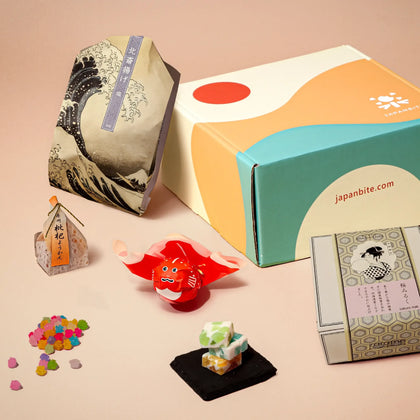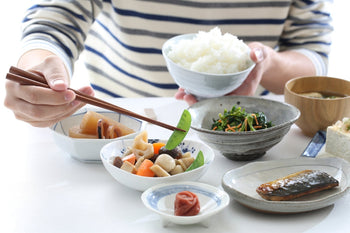

When stepping into a traditional Japanese Ramen-ya, or ramen shop, first-timers might be overwhelmed by the various choices. Each Ramen-ya offers a curated experience deeply rooted in Japan's culinary heritage, with a menu that reflects the region's flavors and the chef's personal touch. This article will guide you through the typical menu items you'll encounter, ensuring that your ramen experience is authentic and delightful. Whether it's understanding the difference between 'shoyu' and 'miso' ramen or deciphering toppings, we've got you covered. Dive in and discover the mouth-watering world of Japanese ramen!
Ramen Culture
Ramen, a dish now symbolic of Japan, originated in China. It was introduced to Japan in the late 19th century by Chinese immigrants. However, it wasn't until the post-WWII era that ramen began its meteoric popularity.
Japan's rapid industrialization increased the need for quick, cheap meals. Ramen stalls thrived, leading to regional varieties like Hokkaido's miso ramen and Kyushu's tonkotsu ramen. Each region added its twist, reflecting local tastes and ingredients.
Instant ramen, invented in 1958 by Momofuku Ando, added another dimension, making ramen a global phenomenon. Today, the ramen culture is immense, with "ramen tours" for enthusiasts and countless shops experimenting with ingredients.
Deeply embedded in Japanese life, ramen is not just food—it’s an experience, a symbol of Japan's adaptability and innovation in cuisine.
Types of Ramen
In the intricate culinary tapestry of Japan, ramen stands out, not as a singular dish, but as an expansive genre of its own. From Kyushu's rich, pork-based tonkotsu to the miso-infused bowls in Hokkaido, every region crafts its distinct flavor and story. Beyond broth types, the choice of noodle thickness, toppings, and preparation methods vary, making each bowl a unique culinary journey.
Soy Sauce Ramen
Soy Sauce Ramen, known as "Shoyu Ramen" in Japan, is one of the country's classic ramen varieties. Its clear brown broth is made primarily from a chicken or pork base seasoned with soy sauce. This gives the soup a tangy, salty, and savory flavor, complemented by its aromatic oils.

Salt Ramen
Salt Ramen, called "Shio Ramen" in Japanese, has a soup characterized by its clear and light broth made from chicken, fish, or both. The broth is seasoned primarily with salt, producing a delicate and refreshing taste. The noodles are thin and straight, complementing the broth's subtle flavors.

Pork Bone Ramen
Pork Bone Ramen, commonly known as "Tonkotsu Ramen" in Japanese, is a beloved ramen variety characterized by its creamy, rich broth. This broth is produced by boiling pork bones, often for several hours, allowing the marrow, fats, and collagen to meld into a milky-white liquid. The noodles are typically thin and straight, holding the thick soup well.

Miso Ramen
Miso Ramen is a distinctive Japanese noodle soup that uses miso paste, fermented soybean paste, as its core flavor. Originating from Hokkaido, this ramen type boasts a rich, aromatic broth combining miso with chicken, fish, or pork bases. The soup has a deep umami flavor, complemented by its often wavy and chewy noodles.

Other unique varieties
Many ramen shops make their own special noodle soups. Some use pork and soy sauce for a tasty mix. Others try something different like tomato ramen which is a bit tangy. There's also super spicy ramen for those who like hot food. Another type is rich seafood ramen, which uses shrimp, clams, and sometimes oyster for flavor. In addition to those, some ramen shops strongly emphasize the noodles themselves. For instance, some shops offer handcrafted noodles to make thick, wavy noodles designed to hold onto the soup better, making it easier to savor the rich flavors. These types of ramen show chefs love trying new ideas and creating tasty dishes for everyone to enjoy.

Ramen-ya Menu
In ramen shops, known as Ramen-ya in Japanese, besides the main ramen mentioned above, some stores offer tsukemen. Tsukemen is a Japanese noodle dish where cold, thick ramen noodles are served separately from a concentrated hot broth. Diners dip the noodles into the broth to eat. Additionally, ramen shops have an extensive side menu, including gyoza, fried rice, flavored eggs, bamboo shoots, seaweed, corn, butter, bean sprouts, green onions, and various other side dishes and topping ingredients, depending on the shop.
How To Order Ramen
Ordering at a ramen restaurant in Japan typically follows these steps:
Using a Ticket Machine
Near the entrance of the shop, you'll find a ticket machine. Choose your desired menu item by pressing its button and insert the required amount of money.
Once you get the ticket, take a seat.
When the staff comes to take your order, hand over the ticket.
At this point, if you have specific requests like noodle firmness or additional toppings, let them know.
Ordering Directly at the Table
After taking a seat, review the menu. When the staff approaches for your order, inform them of your ramen and topping choices.
Again, mention any specific preferences, such as noodle firmness.
Special Ordering Methods
Some ramen shops provide a form that allows you to specify details like the noodle firmness, soup richness, and amount of oil. In these cases, fill out the form according to your preferences and hand it to the staff.
Regardless of the method, if you have allergies or certain ingredients you can't eat, ensure you communicate that clearly to the staff when ordering.
Customize Toppings
Here are some tips for customizing toppings.
Maintain Balance
If you add too many or too varied toppings, you might mask the original flavor of the ramen. Keeping it simple can allow you to savor the taste of the ramen truly.
Check the Price
Toppings often come with additional charges, so it's wise to check their prices on the menu before ordering.
Combination of Flavors
Consider whether the toppings harmonize with the flavor of the ramen. For instance, a lighter topping might complement a heavily flavored ramen.
Consider the Quantity
Order an amount you can finish. Overordering leads to food waste, and overeating is not healthy.
Check for Allergens
If you have allergies to certain ingredients, ask the staff or read the provided information on the menu carefully.
Try Popular Toppings
Choosing popular toppings might reduce the risk of disappointment if it's your first time at that ramen shop.
When choosing toppings, it's essential to respect your personal preferences while keeping the above points in mind to enhance your ramen experience.





